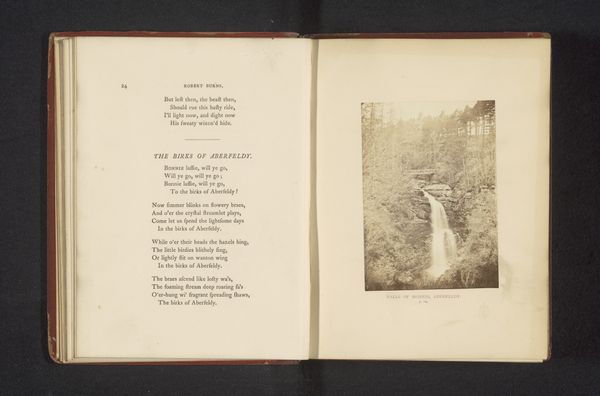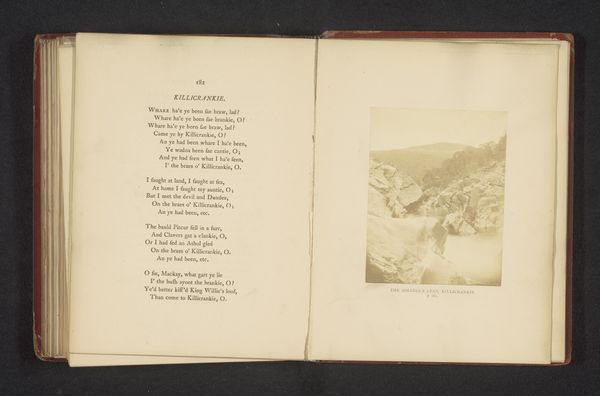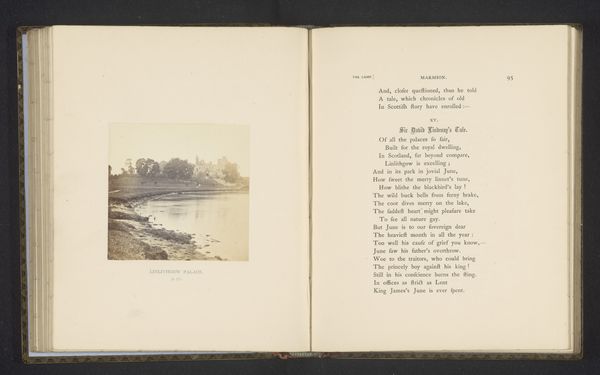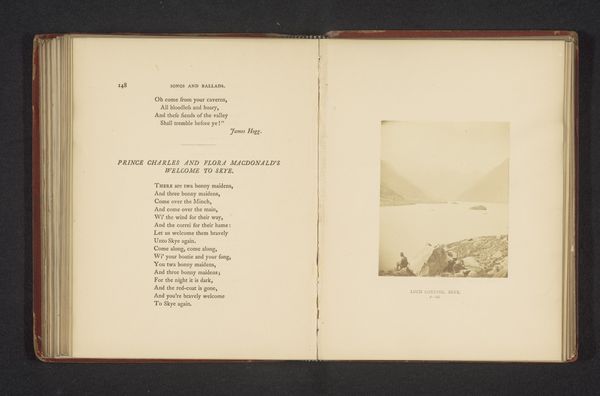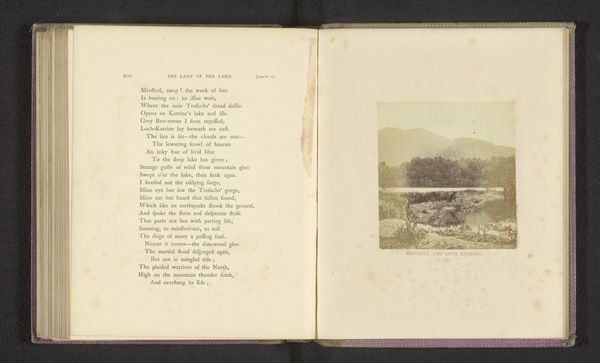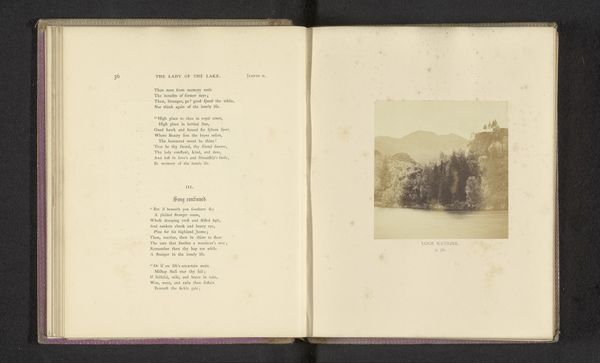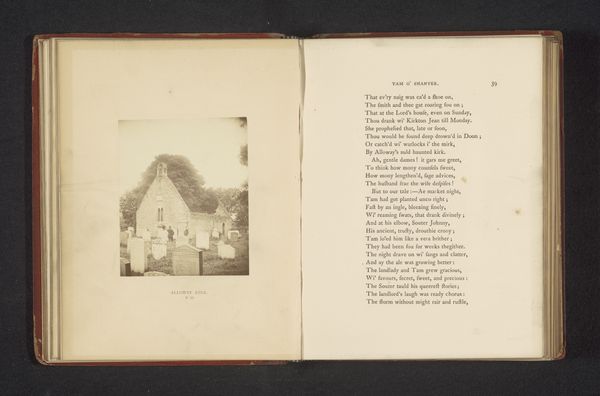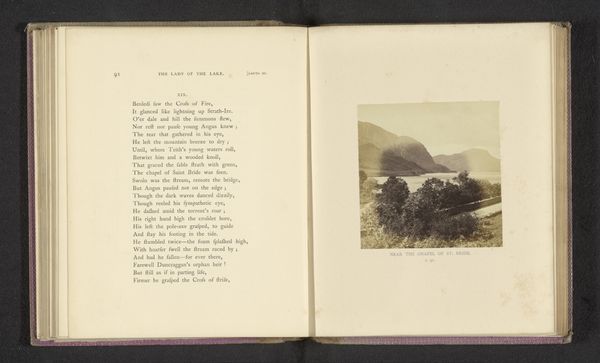
Dimensions: height 94 mm, width 77 mm
Copyright: Rijks Museum: Open Domain
Editor: This is a print of an albumen photograph of Cora Linn, dating from before 1868, by Stephen Thompson. It's actually displayed within a book. I'm struck by the almost staged quality of the landscape; it's picturesque in a very deliberate way. What social commentary do you read into this composition? Curator: It's a vital question. The placement of this romantic landscape within a book is already telling us something about Victorian society's consumption of nature. It was very common in Victorian culture to see nature through the lens of power structures that reflected gendered and colonial narratives. Editor: Gendered? How so? Curator: Consider the composition. The powerful waterfall, 'Cora Linn'—a feminized landscape—is seemingly tamed, captured, and possessed by the very act of photographing and presenting it within a bound volume. Note the tiny figure contemplating the view, ostensibly male, framed against the grand scale. Who has the agency here? Is it the subjugated "feminine" wild of nature? Editor: That makes me think about the Industrial Revolution too, and how landscapes like this became these idealized escapes, almost as a reaction against industrialization. Was the working class really afforded this vision of idealized leisure? Curator: Precisely! While industrial advancements made images like this more accessible, the idyllic scene becomes almost a marketing tool for those very advancements. Who could access these landscapes? This photograph embodies the complexities of the era: the romanticization of nature coinciding with industrial exploitation, reflecting broader power dynamics and social inequalities. This image doesn’t merely present a landscape, it presents a privilege, steeped in issues of class, access, and societal roles. What have you taken away from our conversation? Editor: I’ve never thought about landscapes being inherently gendered. I am rethinking photography’s role in both shaping and obscuring social issues!
Comments
No comments
Be the first to comment and join the conversation on the ultimate creative platform.
